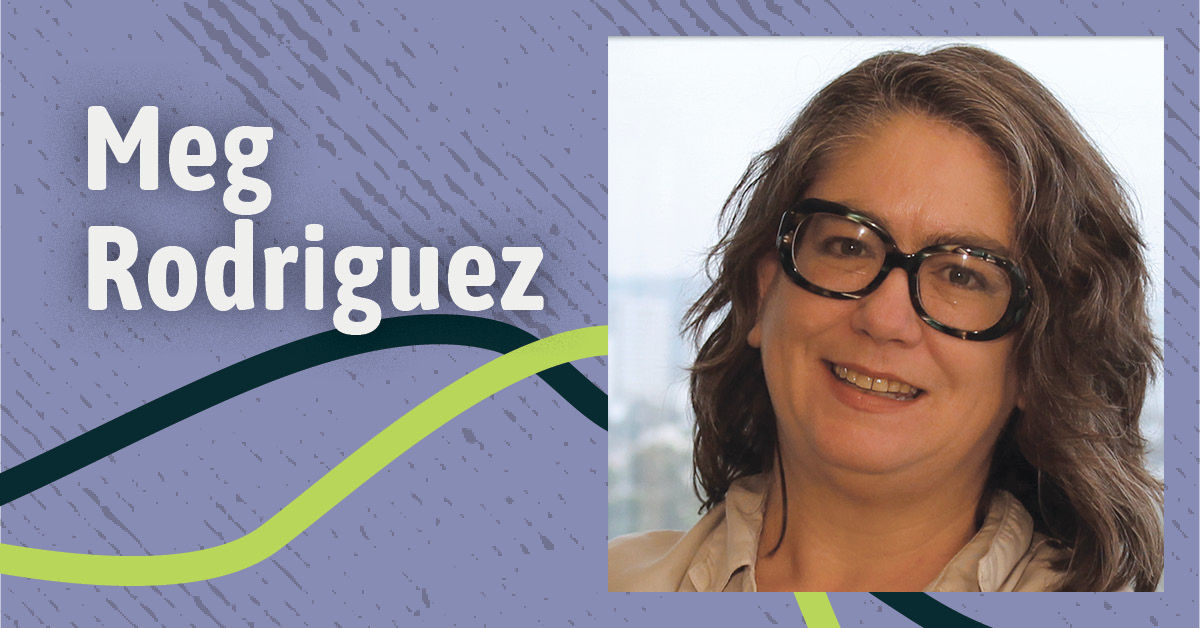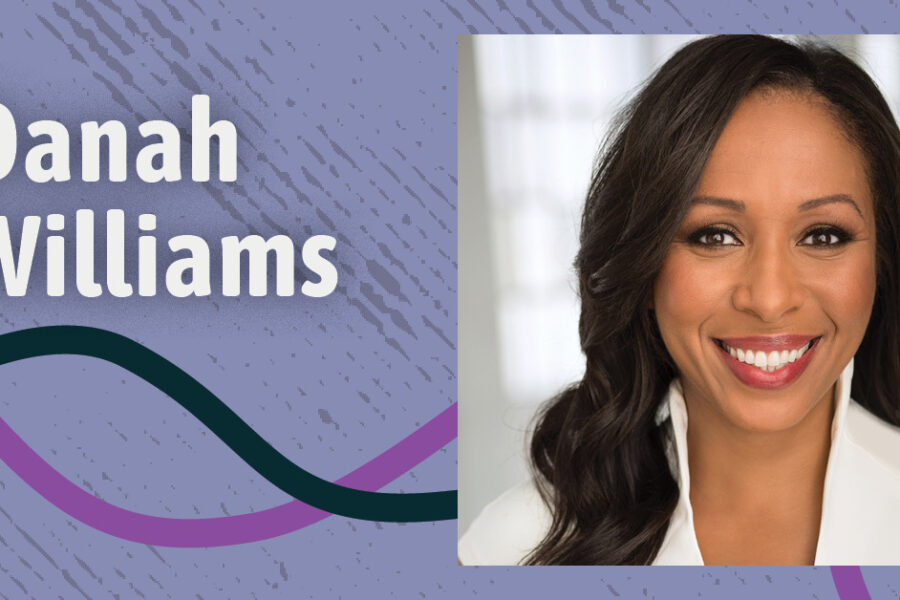In 2003, after a decade-and-a-half of life in San Francisco, Meg Rodriguez was forced to move back to Los Angeles due to the rising cost of living in the city. At the time, she did not like her new home. “I used to love sitting on my stoop with my dogs and chatting with neighbors who walked by,” she says. “Hanging out in the parks with locals.” Los Angeles, on the other hand, she found to be too big, too impersonal. But Rodriguez isn’t somebody to just accept the way things are. So she resolved to understand her area better. She thought that if she learned more about the city, she would better enjoy her time there. As part of this project, she decided to enroll in the Bachelor of Arts in Liberal Studies with an Urban Studies concentration at Antioch Los Angeles. As a student in that program, she gained a more critical understanding of her new home, and in some ways she came to appreciate living in LA.
But her studies also had an unexpected impact: they exposed her to archival work. Along with her studies, she interned at ONE Gay and Lesbian Archives, the largest LGBTQ archive in the world. This experience inspired a commitment to share untold stories of queer history in the United States. It led the ONE Gay and Lesbian Archives to hire Rodriguez to write a new curriculum and textbook about the LGBTQ movement. And now, almost two decades later, it has led to the publication of that work as The American LGBTQ Rights Movement: An Introduction—an important textbook that is being offered as a free download.
Working Connections to the Queer Community
Before Rodriguez came to Los Angeles and to study at Antioch, her previous work in San Francisco had been as a researcher for the Urban Health Study, a project through the University of California, San Francisco aimed to lower risks associated with intravenous drug use. Although a central part of their work concerned educating drug users about the importance of using clean needles, the Urban Health Study found that sexual transmission—especially in conjunction with intravenous drug use—was a multiplier to the spread of HIV. According to the study’s findings, men who had sex with other men “were 8.8 times more likely and women who reported trading sex for money were 5.1 times more likely than other IDUs in San Francisco to become infected with the HIV virus.”
Rodriguez came to see that talking about sexual health was one of the key ways that she could best serve the person she was working with. Because HIV was a particular health risk among gay and bisexual men, these conversations directly helped mitigate transmission. By doing this work, Rodriguez experienced firsthand the way that sexual education impacted people’s lives—and how her work could help.
Rodriguez identifies as a straight woman but is a passionate queer ally. Because she is not a member of the queer community, that she feels extra pressure and motivation to “get it right.”
So while studying for her undergraduate degree at Antioch Los Angeles, Rodriguez decided to pursue an internship at ONE Gay and Lesbian Archives. She got the job, and soon she began to sort through the vast historical material held by the archive. She quickly established herself as an excellent writer and someone who could do thorough research. Her project combined art and history as she created display panels that featured the stories of notable lesbians from throughout history. She came to love this work of researching and writing about the achievements of queer people who worked for change in the world. Storytelling empowered her in a different way than serving as a Public Health Researcher, but it still supported the LGBTQ community.
Rodriguez’s work as an intern caught the attention of the managers of the ONE Archives Foundation, who decided at the conclusion of her internship to bring her on as a full-time researcher and writer. They needed her to help co-research and co-write a history of LGBTQ people and movements in the US, as an addendum to public school textbooks.
Writing A History that Reflects Joy
In 2011 the FAIR Education Act was signed into law, requiring California public schools to provide fair, accurate, inclusive, and respectful representations of diverse ethnic and cultural populations in K-12 classes. A call was sent out to organizations connected to these populations to produce textbooks for possible use in California’s public high schools.
With ONE National Gay & Lesbian Archives chosen to participate, Rodriguez and Kyle Morgan were hired to write the curriculum that later was published as the standalone book, The American LGBTQ Rights Movement: An Introduction. A textbook like this had never existed in the United States. “I really wanted to get it right,” says Rodriguez.
LGBTQ history told from people outside of the community often looks mostly at the struggles and difficulties the community has faced. Rodriguez and Morgan wanted to subvert that dialogue by also including the joys. “We wanted to make sure that we include not just the hard work but the bright flashes of a creator,” says Rodriguez. “To delight in one’s own history.”
Often the accomplishments of LGBTQ trailblazers are overshadowed by the stigmatization of dominant culture. That is why the positive moments in history are so important to bring to students’ attention, especially for students in high school who may just be learning the community’s history.
Rodriguez had to remind herself to remain unbiased in the text. “I couldn’t preach,” she says.“That’s a little difficult when I care a lot about civil rights issues.” She aimed to provide a full picture of each person’s life that was included in the textbook without her own opinions. This was made easier because she had a great deal of source material to draw from through the archive.
One example of a queer activist figure detailed in the book is José Julio Sarria. Rodriguez details how Sarria took to the streets of San Francisco in makeup and drag in an open challenge to local anti-gay statutes. He led the bar’s patrons in renditions of “God Save Us Nelly Queens,” enlisting them in the war against quiet shame and solitude. He went on to run for a city supervisor’s seat in 1961, as the first openly LGBTQ person to run for a government office in the United States.
“That’s huge,” says Rodriguez. “1962 and he didn’t give a damn! He was out and proud before there was an out and proud.”
Rodriguez’s co-author Kyle Morgan says, “The book honors the heroic people and key events that shaped the American LGBTQ rights movement.” It includes personal narratives that capture the lived experience of each era, as well as details of essential organizations, texts, and court cases that defined LGBTQ activism and advocacy. It’s also vibrantly illustrated with historical photographs sourced from archives from around the nation.
A Free Resource For All
Unfortunately, due to priority changes at Los Angeles Unified School District and challenges related to distributing and integrating a full-length textbook, the resource was never adopted in public school classrooms. In 2013, having completed the curriculum she was tasked to write, Rodriguez left the ONE National Gay & Lesbian Archives to go work at Honda, the car company, as a library paraprofessional. She has since found a stable and satisfying career managing library resources—another type of archive—for a big Los Angeles law firm.
However, Rodriguez and her co-author Morgan continued to work to get their textbook published and in the hands of the public. In 2020, Humboldt State University Press finally published The American LGBTQ Rights Movement: An Introduction. In recognition of the work’s importance, the press has made the book available to download for free.
Since its publication two years ago, the book has had a global reach, downloaded over 2,600 times on six out of the seven continents. “The only one missing is Antarctica and I can understand why,” Rodriguez laughs.
This book is a testament to Rodriguez’s passion to support the LGBTQ community through her work. Because the text is free, educators can easily use the stories to teach histories that powerful societal forces often purposefully erase. Rodriguez says, “The best we can do is offer opportunity.” And that’s what this book does. It offers the opportunity to learn about—and celebrate—the lives and efforts of people who have worked to make a more just and equitable world.



